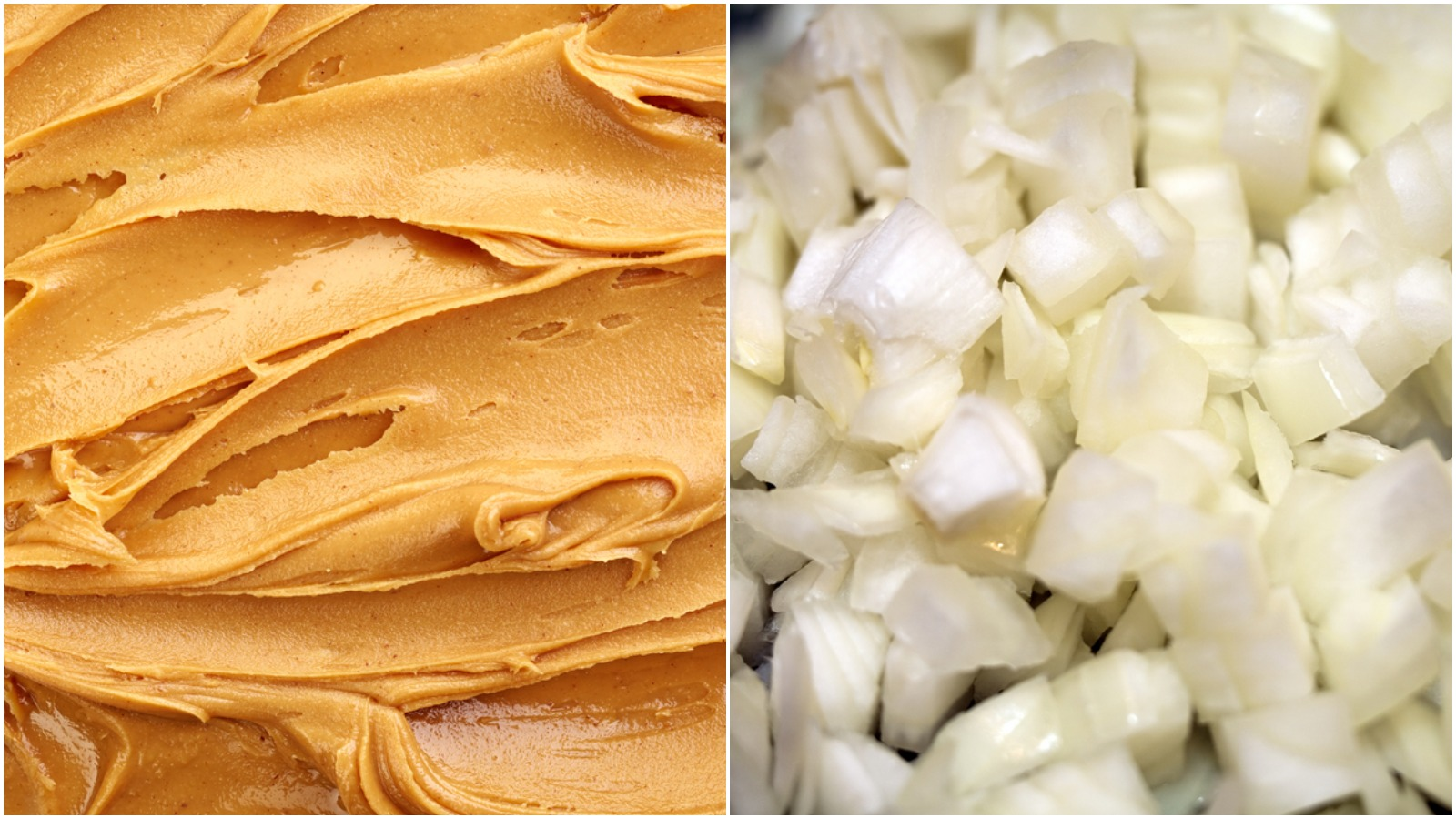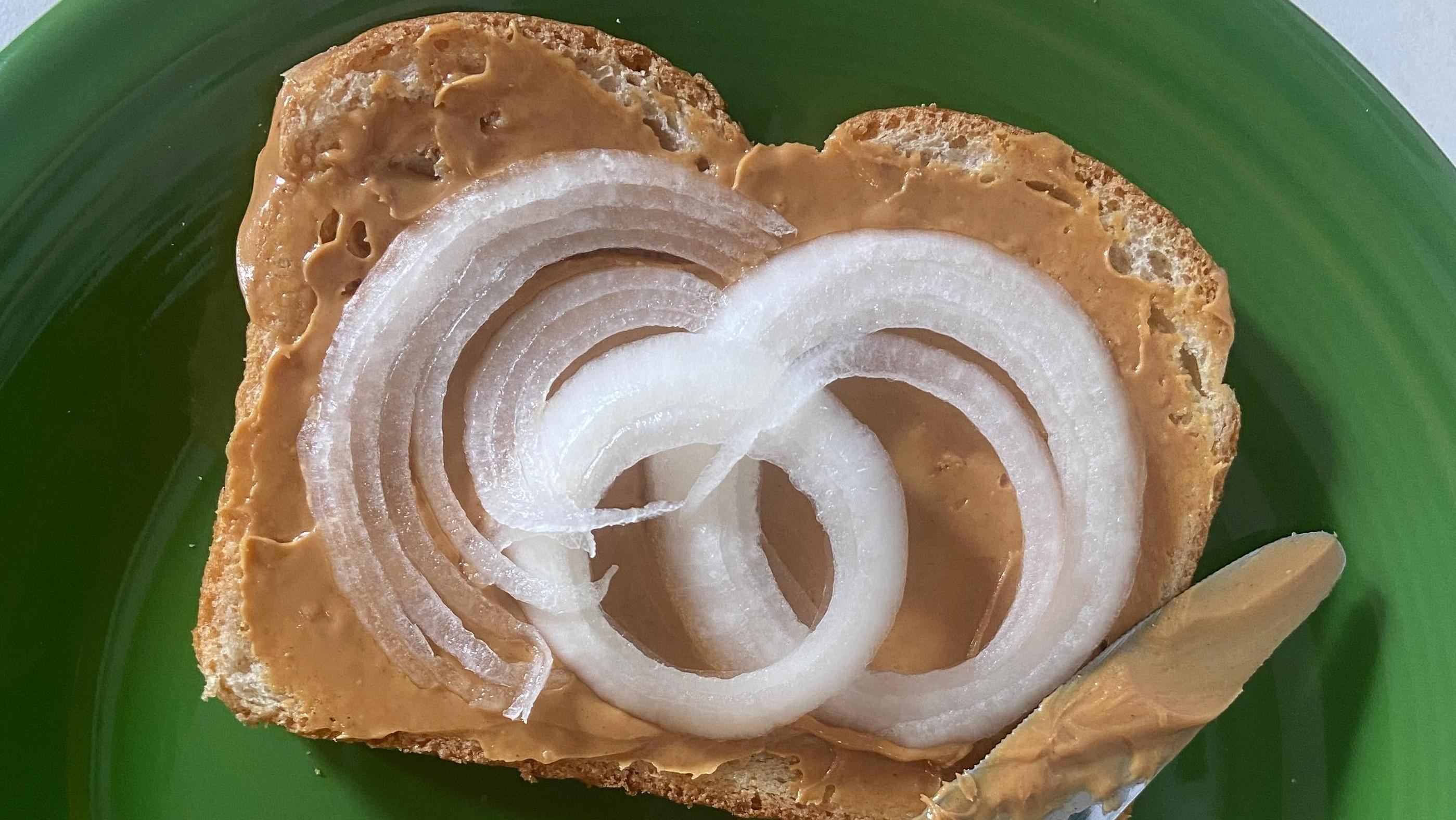Hemingway's Famous Sandwich Isn't As Gross As You Think
Science supports slapping peanut butter and onion between two pieces of bread.
We may receive a commission on purchases made from links.
I'm currently writing my first book, a process that is 1% inspiration and 99% raw terror. The manuscript is due in September, which leaves me about four months to finish writing 100,000 words. While working my day job. And freelancing. And taking care of my dog. And exercising. And grocery shopping. It makes me wish I had the kind of support enjoyed by the Great Men of Literature—someone to do my laundry and make me buttered noodles while I spend days mired in filth and word processing software. Alas, I live alone, so I'm left with the next-best thing: making Ernest Hemingway's go-to peanut butter and onion sandwich.
What is The Hemingway sandwich?
Colloquially known as "The Hemingway," the peanut butter and onion sandwich is an entree shrouded in myth. Did Ernest Hemingway invent it? Who knows. He did, however, reference the sandwich in Islands in the Stream, calling it his "Mount Everest Special" and noting that it's "for commanders only."
I'm a commander, damn it.
With this in mind, I gathered the materials—white bread, salted butter, peanut butter, and thinly sliced white onions—and set out to try The Hemingway.
Preparing The Hemingway recipe
I'll be frank: the recipe for The Hemingway sounds really, really bad. Countless sandwich professionals have worked to make the sandwich more palatable, caramelizing the onions, serving it on fancy bread, and throwing in a glass of red wine as recommended in Craig Boreth's The Hemingway Cookbook. But art requires some degree of discomfort, and if I'm hoping to channel the spirit of Hemingway to finish my cursed book, I've gotta make this thing as the man intended. Thus, I gathered the following:
- Two slices of Rosen's white country sandwich bread
- A rough tablespoon of salted butter
- Thinly sliced white onion
- Creamy peanut butter
I buttered one slice of bread, peanut buttered the other, added the onion on top of the peanut butter, and smushed the whole thing together. Then it was time to sample my creation.
How does peanut butter and onion taste?
I wasn't stoked about tasting the thing; my stomach did a few flips in anticipation of consuming something truly gross. But I steeled myself, readying my taste buds like I was about to down a spoonful of Robitussin. I took a bite, making sure I was biting into a prime onion section. I chewed, swallowed, and paused, confused. It was a perfectly neutral combination of flavors.
The fatty peanut butter and starchy bread tempered the onion's bite, resulting in a shockingly tame sandwich. The emphasis is on "tame" here—the crunch from the onion was pleasant, but I certainly wasn't experiencing some magical combination of flavors. It also was far from the worst sandwich I've ever tasted. The Hemingway was fine.
Wait, The Hemingway was fine?
This went against everything I thought I knew about flavor pairings. The sandwich wasn't nearly as unsavory as I expected—but why did it work? To find out, I chatted with ADM chief global flavorist Marie Wright.
Why peanut butter and onion works, according to science
Wright explains that the pairing comes down to the sulfurous character of both onions and peanuts. "Peanuts are high in a compound called methyl mercaptan, which gives them a very sulfuric, nutty note," Wright says, explaining that onions are also full of sulfur-containing molecules. Those molecules include the amino acid S-1-propenyl-L-cysteine sulfoxide, which is similar to the chemical alliin, found in garlic. Wright theorizes that the mutually sulfuric ingredients could complement each other, although she does jokingly note that "the jury's still out on whether they pair well together."
Is The Hemingway my new literary secret weapon? No, but trying it wasn't necessary an unpleasant experience. Should you include the peanut butter and onion sandwich in your office lunch rotation? I'm not gonna tell you what to do. As Wright puts it: "From a chemistry perspective, the ingredients could pair well—if you don't mind being left with the taste of onion in your mouth, that is."

